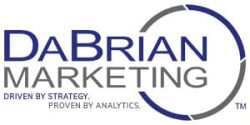As 2012 continues to wind down and we look forward to what 2013 will bring, a great opportunity presents itself to evaluate our content efforts throughout this year, make improvements, and get a jump on January 1. In the spirit of the holiday season and the New Year, we’ve gathered up a list of some Content Marketing “New Year’s resolutions” to make sure your business is ready to hit the ground running when the ball drops.
Revamp an Existing Content Strategy
Even if you’ve got a content marketing strategy in play, it’s always a good idea to take a step back and seek out areas that performed well vs. those that could use improvement. And this doesn’t just mean your digital content assets. If you’ve spent a big chunk of time optimizing digital content, social media profiles, etc., what does that mean for your tried and tested physical marketing materials, like flyers and brochures? Have these been updated as well, carrying over the same cohesive brand message, look, and feel?
This is just one example to consider when evaluating content as a whole. If you’d like more tips in this area, our team recently wrote an exhaustive white paper on the subject (and did we mention it’s free to download?).
Subscribe to a New Marketing Source / Blog
We all know the value of the Internet when it comes to gathering the latest trends, tactics, and updates from a marketing perspective. With that being said, branching out and finding a new resource can offer up better insights and give your marketing teams more fodder to drive their future actions toward innovation. There are a bunch of resources, blogs, and discussion groups out there that report on what’s “hot” among different audiences.
If your company would rather keep up with industry-specific trends, taking that route also has great advantages. Keeping up and interacting via LinkedIn groups is a great way to find and participate in industry-wide discussions as well as hear different opinions and viewpoints.
Evaluate your Brand and Content as a Tag Team
Nothing in digital marketing operates in isolation. Everything is interconnected, and different campaigns always influence and affect each other. From a content-based standpoint, one of the most direct relationships is between your content and your brand.
For 2013, it may be time to re-evaluate this relationship; does your content reinforce your brand promise and “mission statement“? Is there a solid “brand language” established for all company communications? Do these elements work together across all media and materials? Taking all of these concerns into consideration is a big step toward highlighting what makes your business stand out and carrying those differentiating factors over to the way you market and advertise.
